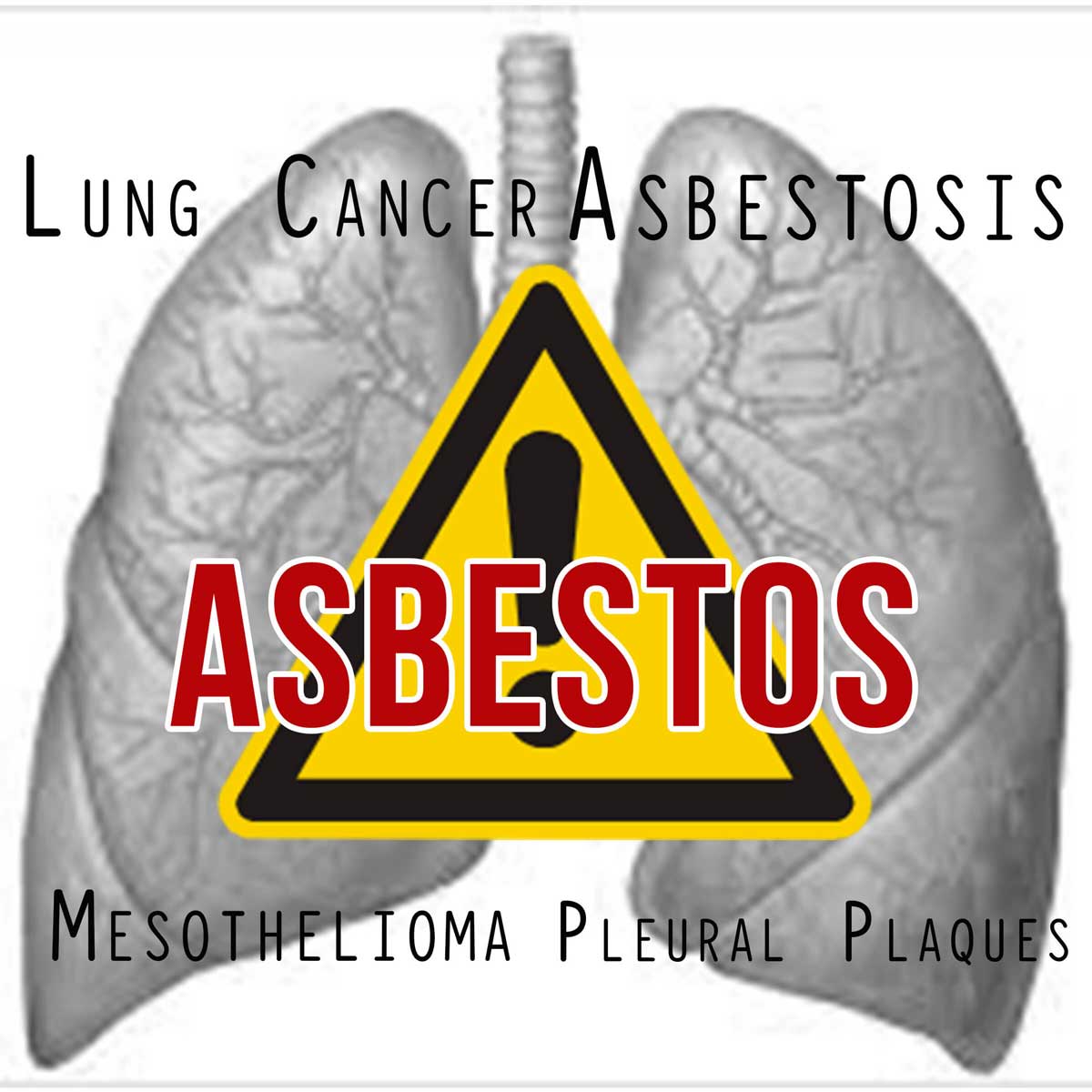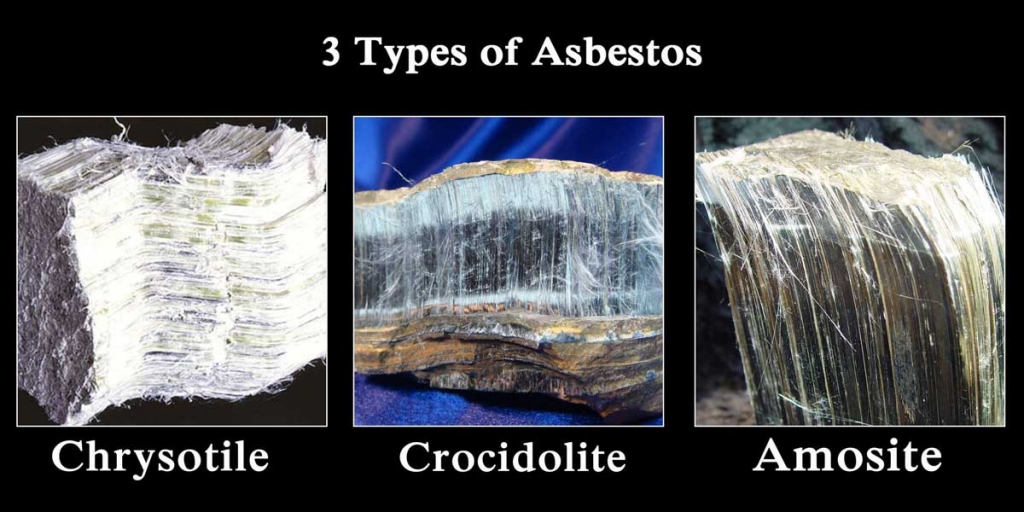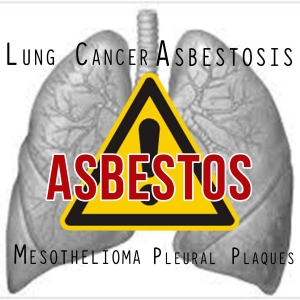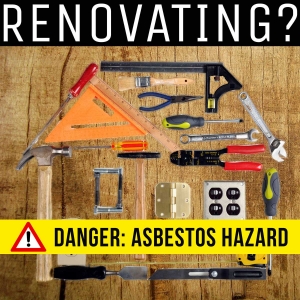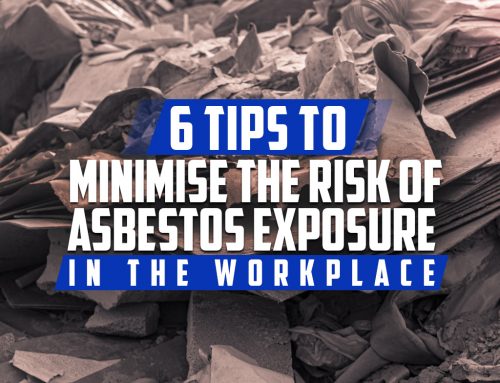Asbestos Exposure: An Introduction
Asbestos Exposure poses a serious health hazard and may occur in the workplace, in the community we live in or in our very own homes. Most cases of asbestos exposure occurs in asbestos workers, however because asbestos can be persistent, family members of the workers who have been exposed heavily to asbestos can be affected as well.
The Versatile and Invitrifiable Asbestos
Asbestos is a general term used for naturally-occurring silicate minerals that are in fiber form. Some of the of these compounds also exist in nature in different forms, some may have the same empirical formulas of their fibrous brothers, but may have a different physical appearance, like a solid rock. These minerals exist naturally in its metamorphosed stage. These are considered igneous rocks that have a low pH, basic or ultrabasic. The term “asbestos” was coined back in ancient times, the modern and legal definition given to it by the Environmental Protection Agency defines the word asbestos by limiting the term to 6 specific fibrous minerals categorized in two distinct groups, namely:
1. Serpentine Group
a. Chrysotile
2. Amphibole Group
a. Amosite
b. Crocidolite
c. Tremolite
d. Actinolite
e. Anthophyllite
Other properties of asbestos that make this compound of so much interest, is its ability to be spun into fiber and formed into fabric. They have been made into fire retarding clothing, gloves, gaskets and so many other products. Chemically inert except for the lone member in the serpentine group, chrysotile is resistant to acid.
Asbestos is resistant to water and other chemicals. It does not have any odor or taste. The fibers, once airborne, can be too small for the eye to see. That is why asbestos exposure can be very difficult to detect.
The fact that asbestos is considered to be an industrial superstar because of these characteristics, they have found their way into more than 5000 successfully commercial products finding their way into the many residential, commercial, industrial, marine products. Making the detection of asbestos exposure tricky.
Three Most Common Types of Asbestos
As mentioned above, from the six types of EPA-identified asbestos, there are three that are most widely used in application. They are generally identified by their color, they are:
1. Chrysotile, White Asbestos
White Asbestos Chrysotile is the only member of the serpentine group of asbestos. Characteristically curly, this asbestos is the most flexible of all. This allows asbestos fibers to be spun and formed into textile to make gloves, fire blankets, and fire protection clothing, they can be formed into fabric just like regular cotton.
White Asbestos has the ability to withstand hot temperatures, and still be resistant to alkalis (bases). Their resistance to alkalis renders them a good reinforcing compound with concrete, rendering their nonflammable properties to concrete.
Chrysotile white asbestos was the most widely used asbestos comprising about 95% of asbestos mined annually. Other uses of asbestos cement products such as corrugated sheet and cavity roof decking, drainage and sewage pipes are acceptable under current regulations. Under similar conditions, products containing chrysotile tend to age better than those containing crocidolite or amosite
2. Crocidolite, Blue Asbestos
Crocidolite, more popularly known as blue asbestos and is a member of the Amphibole group. The needle-like structure of the crocidolite fibers makes them the strongest of all asbestos fibers. This same structure also renders crocidolite to have a high resistance to acids.
Blue Asbestos was used extensively in the manufacture of preformed thermal insulation, yarn and rope lagging before their banned from future use. Aside from preformed insulation, some crocidolite was also sprayed-on as an insulation material.
Of the three types of asbestos, Crocidolite is known to be the most deadly because of its structure.
3. Amosite, Brown Asbestos
Amosite, another member of the Amphibole group, is also known as brown asbestos. Well differentiated from other asbestos because of its harsh, dendritic fibers, it has good resistance to heat and has good tensile strength. In buildings construction, amosite was used for to prevent condensation and for its good sound dampening purposes. Industrial applications it is used on structural steel as part of passive fire protection systems. Between the years 1920 and 1960, amosite was heavily used in preformed thermal insulation, their value as a building material was to provide insulation for piping structures and the pipes themselves, formed into slabs and moulded pipe fitting covers.
The Harms of Asbestos Exposure:
- There is no assigned safe level of exposure to asbestos fibers. In other words, no exposure is too little.
- Utmost safety precautions must be observed when working with asbestos or during asbestos removal in Melbourne, otherwise you risk asbestos exposure for yourself and your family to long-term often times, irreversible detrimental health risks.
- If asbestos, especially friable asbestos is disturbed, it can release dangerous minute particles into the air.
- Airborne asbestos particles can be so small and may not be easily be seen by the unaided eye. Never assume that friable asbestos will not be airborne once disturbed.
- Asbestos exposure by inhalation from friable asbestos fibers can cause mesothelioma asbestosis, and lung cancer.
- Mesothelioma is a cancer which most often afflicts the lining of the lungs. There is no known cure for mesothelioma.
- The rates, incidences of the incurable cancer malignant mesothelioma are expected to rise from 2012 to 2020.
- The risk of contracting asbestos-related diseases increase with the number of fibers inhaled by the length of time that you inhaled asbestos fibers (number of years of asbestos exposure).
- Smoking greatly increases the risk of lung cancer coupled with asbestos exposure.
- Diseases from asbestos exposure do not usually exhibit symptoms until after 20 to 30 years after asbestos exposure.
- Mesothelioma symptoms exhibit after an average time of 45 years after asbestos exposure.
Who is at risk of developing asbestos-related diseases?
Military Asbestos Exposure
Military personnel whose jobs involved handling and using asbestos in the normal course of their duties are subject to asbestos exposure and its detrimental effects. The military appreciated the use of asbestos in service so much that they mandated the use of asbestos. Some ships, especially those prior 1970 used asbestos as an insulation material, they were used to protect personnel maintain the operations of ships. They were used as insulation for pipes and boilers. During normal operation, the asbestos would not pose serious health risks, the danger arises when the pipes, boilers and lagging are disturbed by cutting, grinding, sanding, re-applying, and removal of the asbestos-containing materials. These onboard maintenance and repair activities pose serious asbestos exposure to military personnel.
Commercial and Industrial Asbestos Exposure
Persons who have worked in the mines and for establishments that process igneous rocks that come from the mine are at risk of asbestos exposure. Likewise, end users of asbestos materials in commercial and industrial sectors are also at risk of asbestos exposure.
There are different job sites where dangerous levels of asbestos are present. These job sites are considered as“high heat” environments that require the use of fire and heat resistant materials for the construction of machinery or even in the protective clothing that workers were required to wear including fire-resistant gloves and apron. Examples for these job sites include:
- Oil refineries
- Power plants
- Steel mills
- Chemical plants
Commercial Product Asbestos Exposure
Personnel who have used end products made from or made with asbestos are at risk of asbestos exposure, from heat resistant gloves, to fire retarding clothing, the use of these commercial products have exposed personnel in different industries to the long-term adverse effects of asbestos exposure.
Aside from those who worked in the construction industry, DIY enthusiasts who worked with popular building and construction products are also at risk of asbestos exposure. Many commercially available products through the late 1970’s were made with asbestos, including those that are commonly used for home repair and construction such as insulation, roofing materials, siding, tiles, joint compound and flooring. These products when cut, sanded or filed release asbestos fibers into the air.
Second Hand Asbestos Exposure
Second hand asbestos exposure are those people who were not directly exposed to asbestos. These include family members who live with personnel who have worked in the mines, establishments and installations that use asbestos on a regular basis, whatever industry they may have been in. When workers from these establishments and installations return home after a day of work, they bring home with them, unbeknownst to them, the dangerous asbestos fibers sticking in their hair, hands, skin and in their clothes. Simple and innocent interactions with asbestos workers like hugging, kissing and holding hands exposes the family members to asbestos. Even sharing a laundry load with the work clothes of the asbestos workers and wearing these clothes afterwards exposes the family members to asbestos. Remember, asbestos does not dissolve in water, though some may be remove during laundry, the ability of the asbestos fibers to cling to fabric and their insolubility in water makes them difficult to be removed from clothing. Some of these fibers that cling to clothing eventually becomes airborne, and that’s when the danger starts.
Deadly Asbestos, a Class 1 Carcinogen
The Australian government has recognized that diseases like mesothelioma and lung cancer are listed as a 7(1) declared diseases.
1. Mesothelioma
Maglignant mesothelioma is a cancer that affects the mesothelial cells found inside the pleural membranes that cover the lungs. The pleura serves as a smooth surface so that during respiration, the lungs can expand and contract smoothly within the chest cavity.
There are two pleurae: the parietal pleura, the pleura that covers the inside of the chest wall and the visceral pleura, one which covers the outside surface of lungs itself. With the aid of small fluids secreted by the pleural membranes, the visceral pleura can slide smoothly over the parietal pleura.
Symptoms:
The most common symptom of mesothelioma include shortness of breath. This happens when there is a pleural effusion between the two pleurae, which, in turns gives the effect that the lungs are being squashed because of the accumulation of the fluid. Along with this effusion, chest pain is also reported in many cases, along with a sensation of tightness the chest. At the later stage of the disease, mesothelioma patients may experience appetite and weight loss, fatigue, fever, night sweats and anemia.
The only known cause of mesothelioma is asbestos exposure.
Diagnosis:
There is much difficulty in diagnosing mesothelioma as the symptoms of this debilitating disease is very similar to other ailments afflicting the lungs. With diagnoses reaching 2,500 ~ 3,000 in the United States a year, the pathology of the disease is very similar to adenocarcinoma of the lungs. Oftentimes, imaging techniques are used to verify a diagnosis. Procedures like a PET, a CT scan and an MRI can be used to verify a diagnosis, some oncologists may also order a biopsy to reach a conclusion on a diagnosis.
Unfortunately, approaches to possible treatments for mesothelioma are only to prolong life and not to eradicate the cancer. The use of the drug Alimta is now used to reduce tumor size to prolong and improve quality of life for persons afflicted with mesothelioma.
2. Lung Cancer
Research suggest that concentration and duration of asbestos exposure determine the risk of developing lung cancer. A 4% probable increase in the occurrence of lung cancer is approximated by the Helsinki Criteria with each year of asbestos exposure. The Occupational Health and Safety Administration (OSHA) has reached a conclusion that the correlation between asbestos exposure and the development of lung cancer is highly viable. It states that the higher the concentration of asbestos fibers a person is exposed to is proportional to higher risks of lung cancer development.
Symptoms:
Symptoms of lung cancer generally include a persistent cough that does not go away with OTC cough medicine or even worsens in time, hoarseness and wheezing, labored breathing, pain or discomfort in the chest. It may also be accompanied by appearance of blood in the sputum, either appearing as streaks or a rust-colored sputum. Lung cancer patients may also experience a loss in appetite and weight.
Diagnosis:
The diagnosis of lung cancer due to asbestos exposure should follow the Helsinki criteria to ascertain that lung cancer is definitely caused by asbestos exposure. Ten years is observed to be the latency period prior to the development of lung cancer due to asbestos exposure, other factors notwithstanding.
There are two types of lung cancer associated with asbestos exposure, small cell lung cancer and non-small cell lung cancer, a combination of both is also prevalent. Treatment options involve radiotherapy, chemotherapy and surgery.
3. Asbestosis
Asbestosis is a lung disease characterized by the formation of lung tissue scars, it can only be contracted by prolonged asbestos exposure. When asbestos fibers are inhaled, some of these fibers end up in the tiny sacs in the lungs called alveoli, some end up and accumulating in the bronchioles. Scar tissues in the lungs are formed due to the chronic irritation caused by asbestos fibers wounding the lung tissue that eventually heal that form scar tissue. Over time, as asbestos exposure happens unabated, the more and more asbestos fibers enter the lungs causing more irritation and producing more scar tissue. Eventually, lung tissue become stiff making it difficult to breathe.
Symptoms:
One of the first noticeable symptoms of asbestosis include shortness of breath which can be experienced after exertion of force, but in most cases, as the disease develops, it can be a persistent condition. Very common to other lung ailments, symptoms may also include a cough that won’t go away accompanied by chest pain. Wheezing cough, fatigue, hoarseness are also observed.
Diagnosis:
Diagnosis of Asbestosis can be confirmed by imaging tests such as chest x-ray and CT (computerized tomography) scans. Without the aid of these diagnostic tests, diagnosis can be difficult as the symptoms of asbestosis can be similar to other lung ailments like pneumonia or bronchitis.
Currently, there is no treatment available to aid asbestosis sufferers. Treatment involves only to slow down the progression of the disease and to relieve the symptoms. Patients suffering from asbestosis might be given an supplemental oxygen to improve delivery of oxygen to the body. A lung transplant may also be considered if symptoms are severe.
4. Pleural Plaques
Pleural plaques are benign fibrous thickening of the pleura, the pleurae are the lining that covers the exterior of the lungs and the chest walls. The formation of pleural plaques is an indication that there was a significant exposure to asbestos some 20 or 30 years earlier in life. How pleural plaques form is still a puzzle for medical practitioners.
Symptoms:
Persons who develop pleural plaques normally don’t exhibit symptoms, they are often diagnosed when undergoing imaging procedures like chest x-ray, CT scans or MRI, most often than not, when these procedures are done looking for something else. Unlike asbestosis, developing pleural plaques is not a precursor to cancer.
Diagnosis:
Diagnosis of pleural plaques, similar to lung cancer and mesothelioma, is confirmed by imaging techniques, by chest x-ray and the more conclusive CT scan. For most cases, the formation of pleural plaques do not affect lung function, and no treatment is necessary, however, when pleural thickening develops, where more extensive fibrous thickening occurs, it can prevent the lungs from fully expanding and may cause breathlessness. Pleural thickening normally affects a greater area than pleural plaques.
5. Gastrointestinal Tract Cancers
Gastrointestinal tract cancers is a generally accepted term affecting the intestinal tract, including the stomach, pancreas, gallbladder, liver, colon and rectum. This may also include gastrointestinal stromal tumors. Although the relationship between asbestos exposure and gastrointestinal tract cancers is still unclear, it is considered possible.
Symptoms:
A person suffering gastrointestinal tract cancers may experience labored breathing, an abnormally fast heartbeat, fatigue or swollen feet. Oftentimes a sensation of warmth is felt in the face and neck that may be accompanied by redness. A dull pain in the abdomen, or a feeling of fullness that may or may not be persistent, some report a feeling of fullness even after eating a small quantity of food.
Diagnosis:
Diagnoses for the varying cancers affecting gastrointestinal tract cancers differ, but the size, location and stage at which the cancers are discovered are key to the prognosis of the disease. Early stages of the disease may be difficult to detect without tests and some are found out when a medical practitioner is looking for something else. The key is if you are feeling any of the symptoms stated above and it doesn’t go away after a few days, it is best to consult with a physician.
DIY House Renovation and Asbestos Exposure
In Australia, a nationwide ban on the importation and use of all forms asbestos was in force on December 31, 2003. Reflecting the ban, the National Occupational Health and Safety Commission (NOHSC) revised asbestos-related material to promote a consistent approach to controlling exposure to workplace asbestos and to introduce best-practice health and safety measures for asbestos management, control and removal. The ban does not cover asbestos materials or products already in use at the time the ban was implemented.
1-out-of 3 Australian houses are built using asbestos. With older houses built before 1970, asbestos exposure becomes a risk when home renovations are carried out. Asbestos exposure is prevalent with renovations carried out in the fibro sheeting widely used in the construction of the homes. Research results from the Medical Journal of Australia reported that a survey conducted in 2008 out of 1597 participants who renovated their homes DIY, 527 reported asbestos exposure during the renovation. 337 (39.3%) reported that their partner was subject to asbestos exposure during the renovation. 196 (22.8%) reported that their children were subject to asbestos exposure. From the survey, 20% reported that they will carry out renovations in the next 5 years.
Comparing Britain and Australia, Australia has only a third of the UK’s population, but its asbestos disease fatalities approximate Britain’s of more than 3,000 cases annually.
Asbestos exposure due to DIY home renovation is real, but nonetheless, manageable. The safest approach to conduct home renovations is to assume that asbestos was used during the construction.
Employing a professional removalist or occupational hygienist is the best approach to manage asbestos exposure when planning a home renovation.
How to Avoid Asbestos Exposure
The best way to avoid asbestos exposure is to not handle it and stay away from it. You should not, in anyway, handle any removal of already installed asbestos or asbestos containing materials by yourself.
Asbestos Exposure becomes viable only when friable asbestos becomes airborne due to damage or due to wear and tear, they may also become airborne during the course of repair. The use of asbestos has been banned since 2003 and is no longer allowed to be used in new constructions or building repairs.
Asbestos Exposure nowadays is limited to industrial, marine (ships and shipyards) and residential and commercial building occupants where asbestos was used during construction.
There are laws in Australia that deal with the disposal of asbestos and asbestos-containing materials. They should in no way be disposed of in the trash to avoid asbestos exposure.
